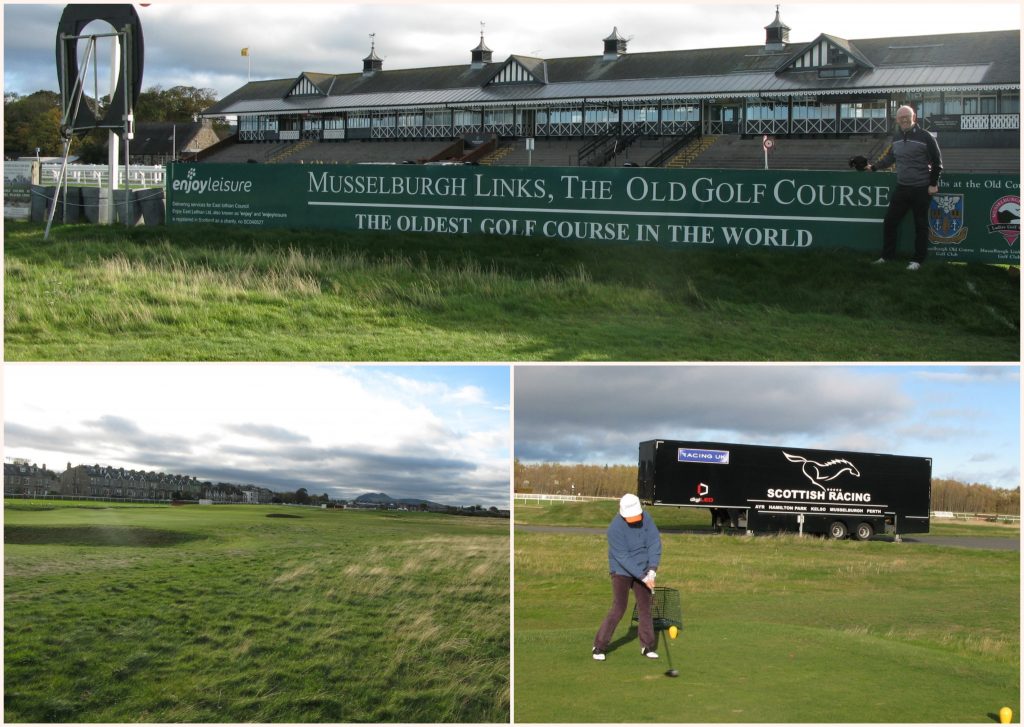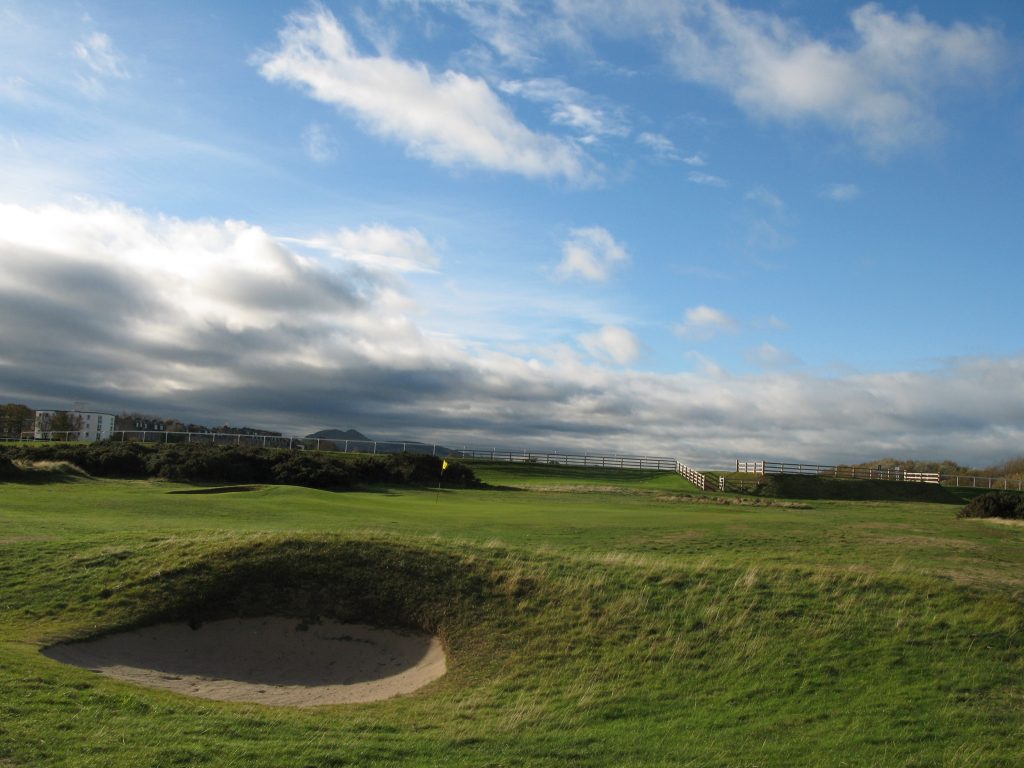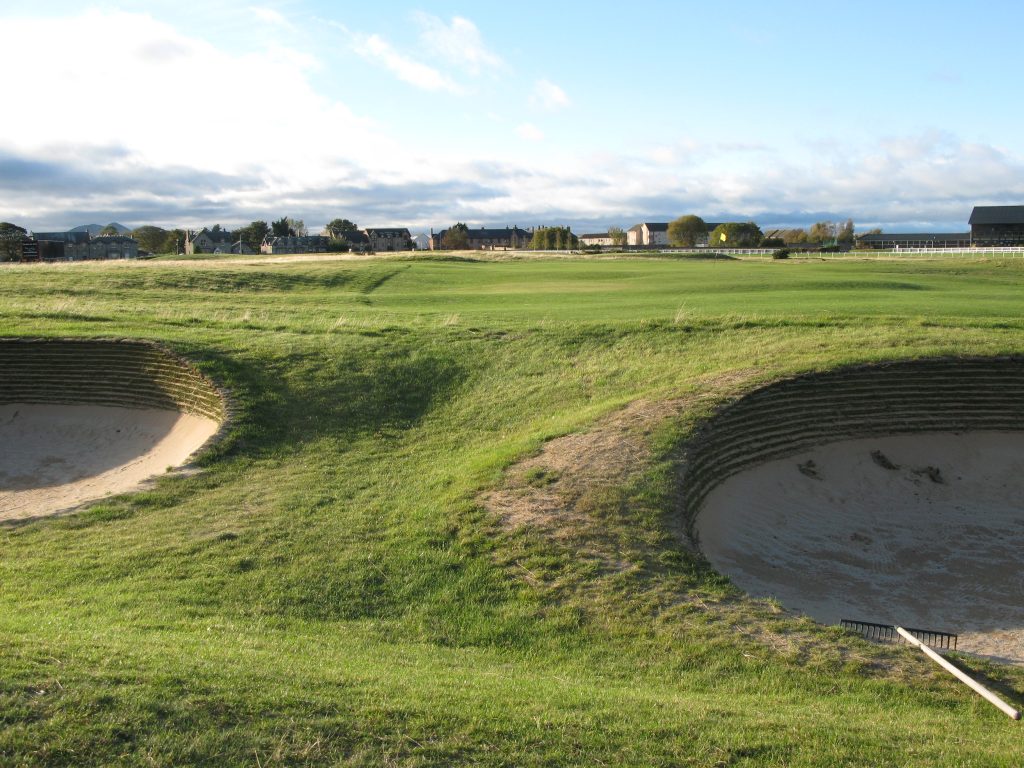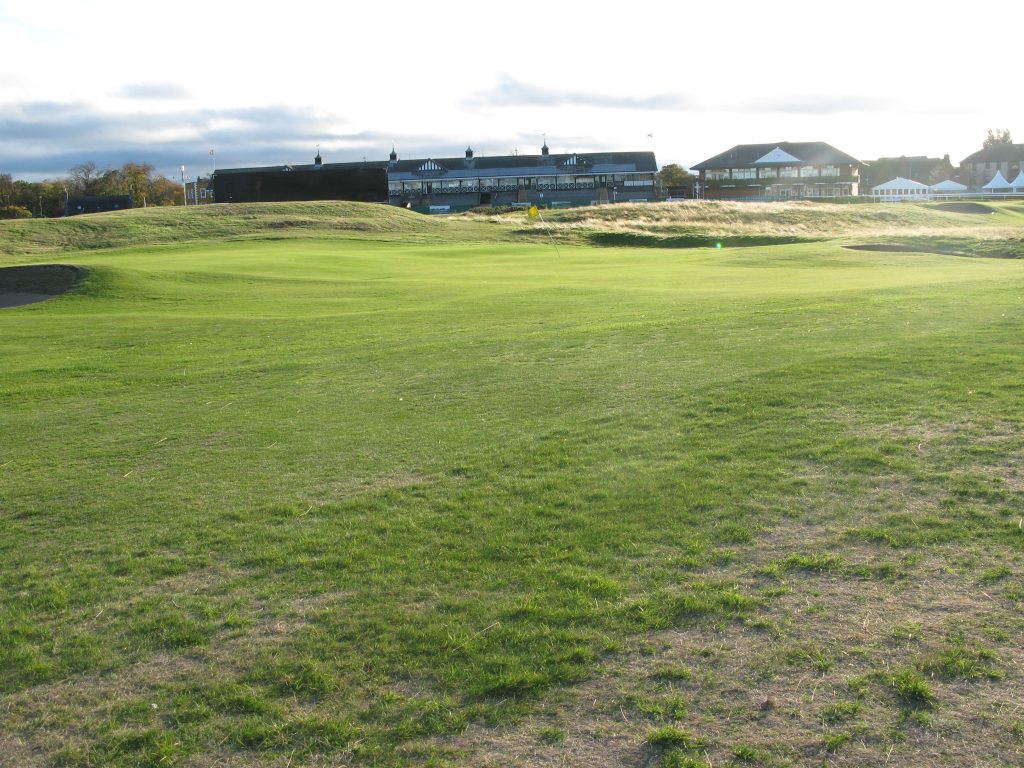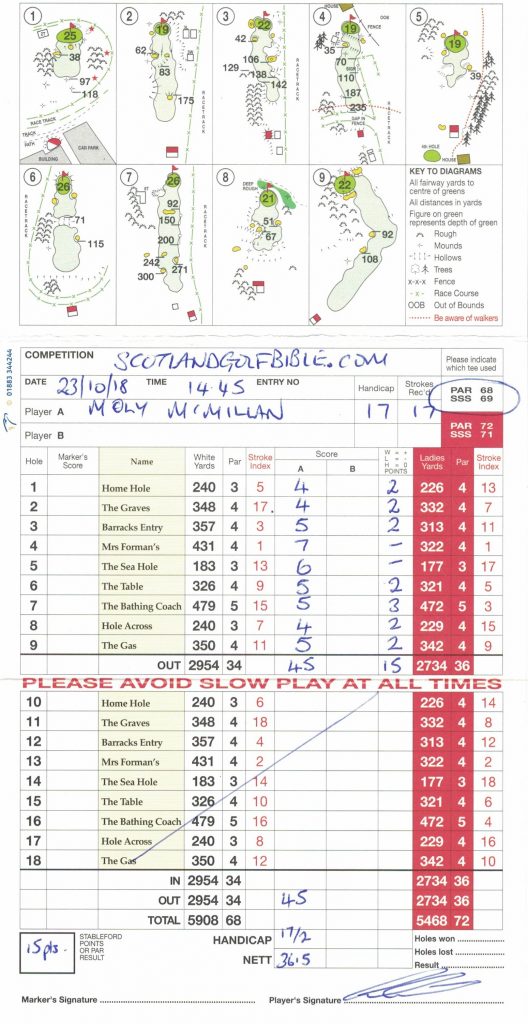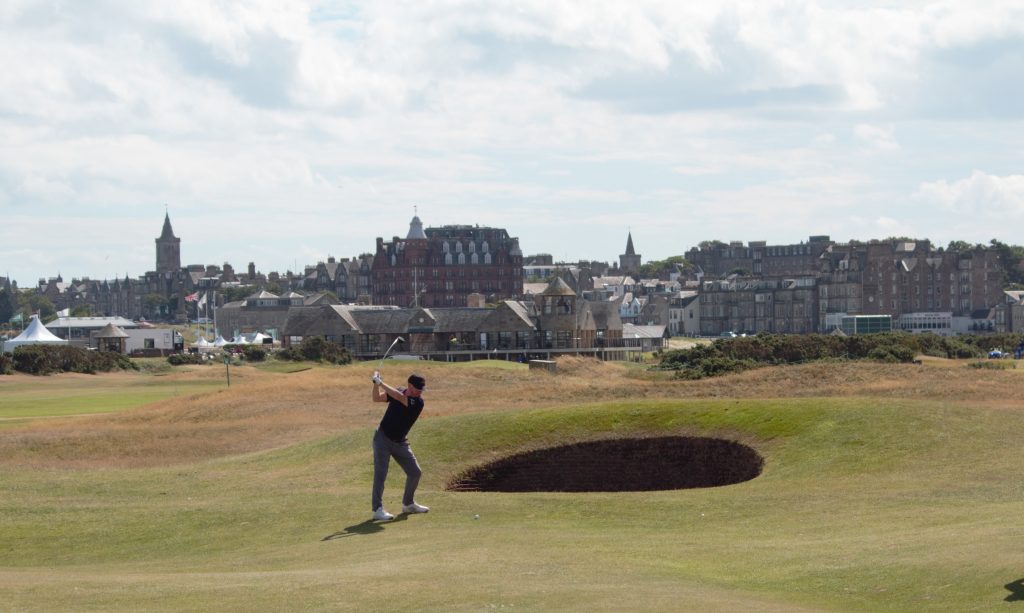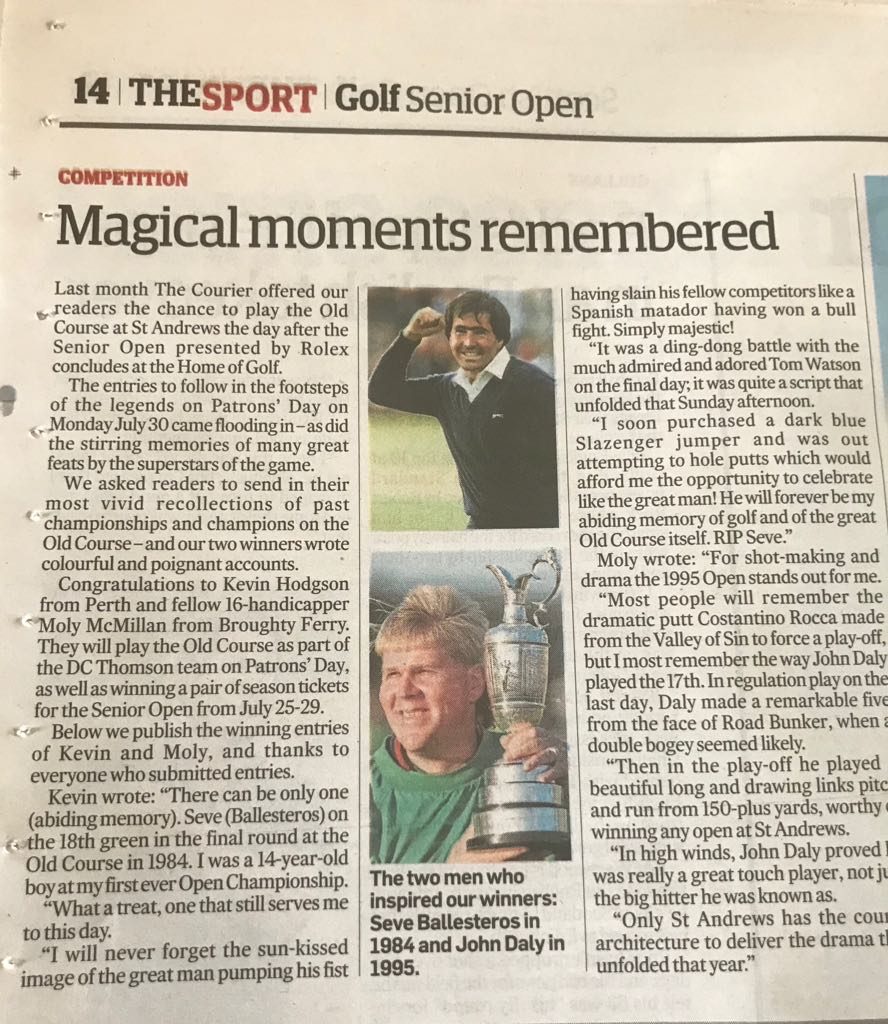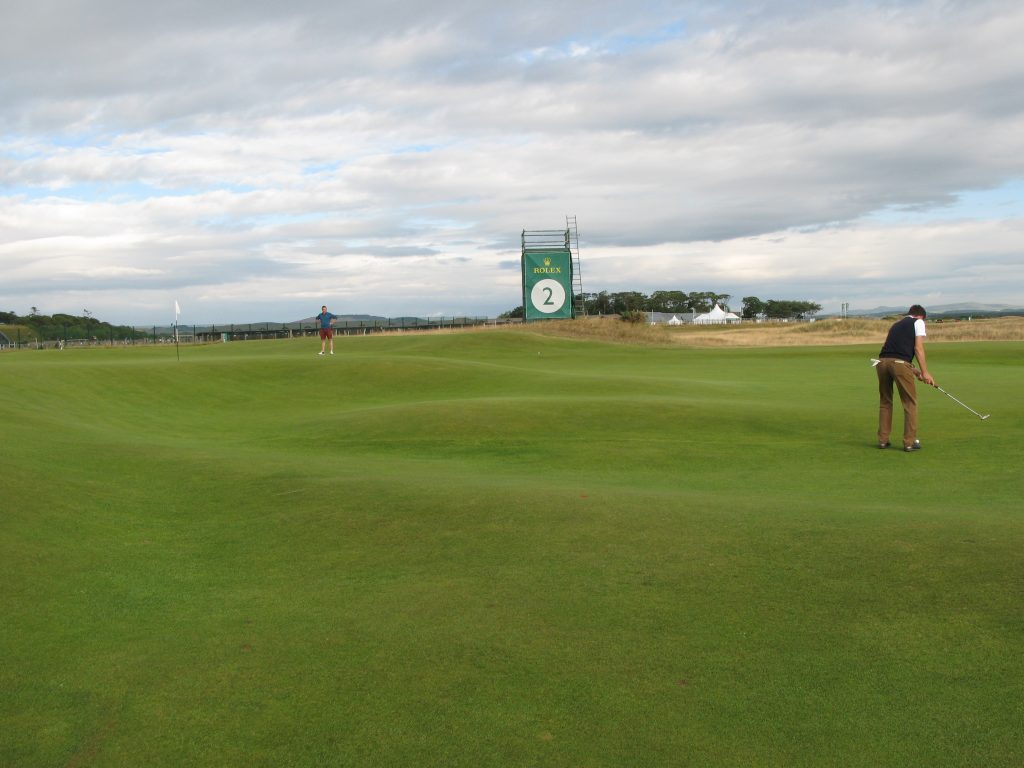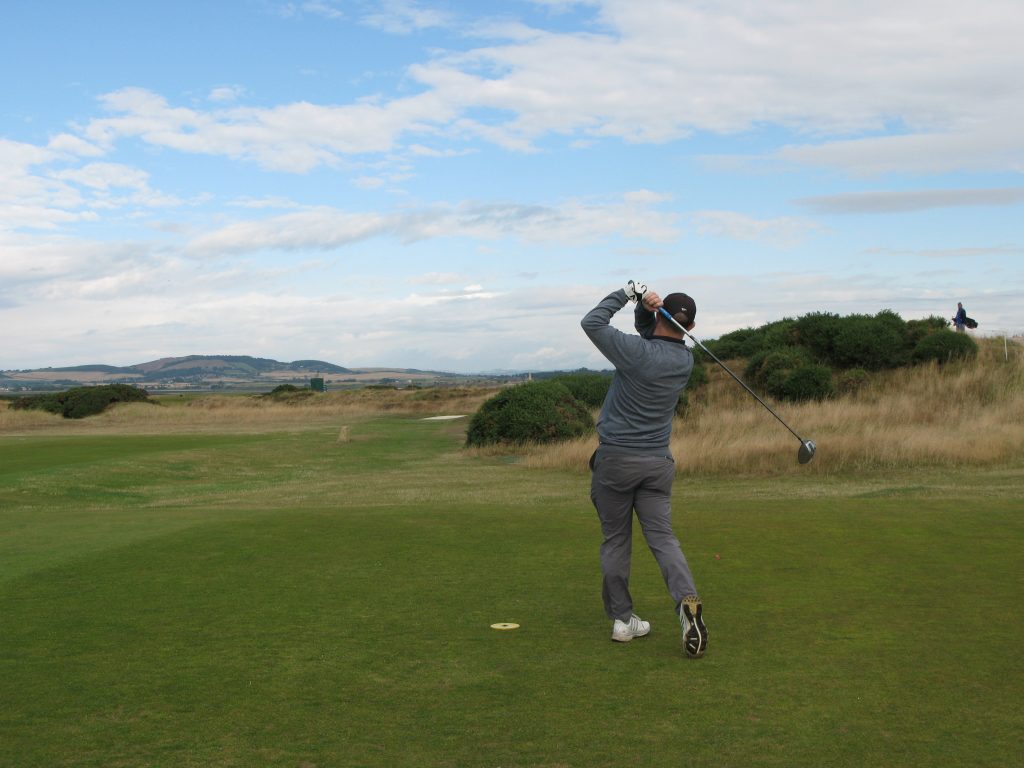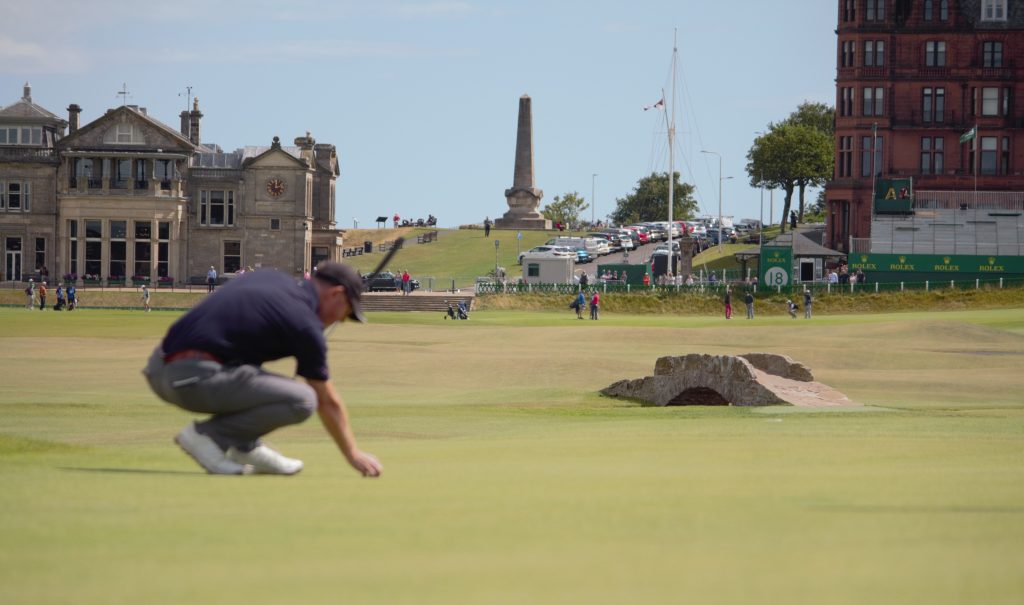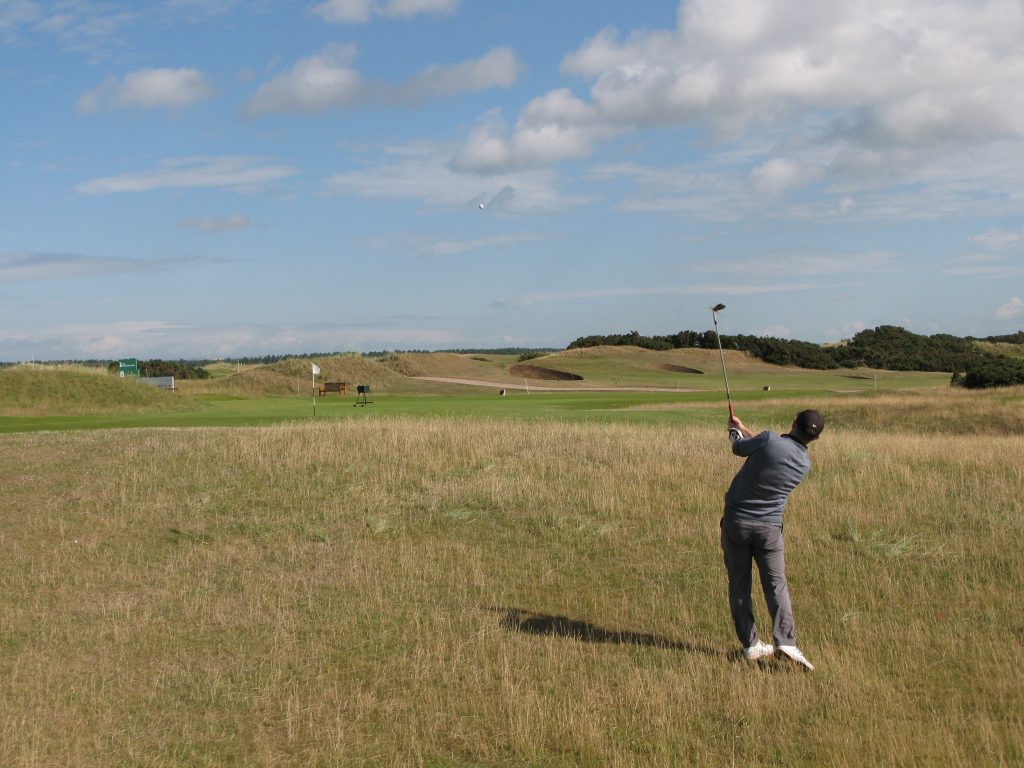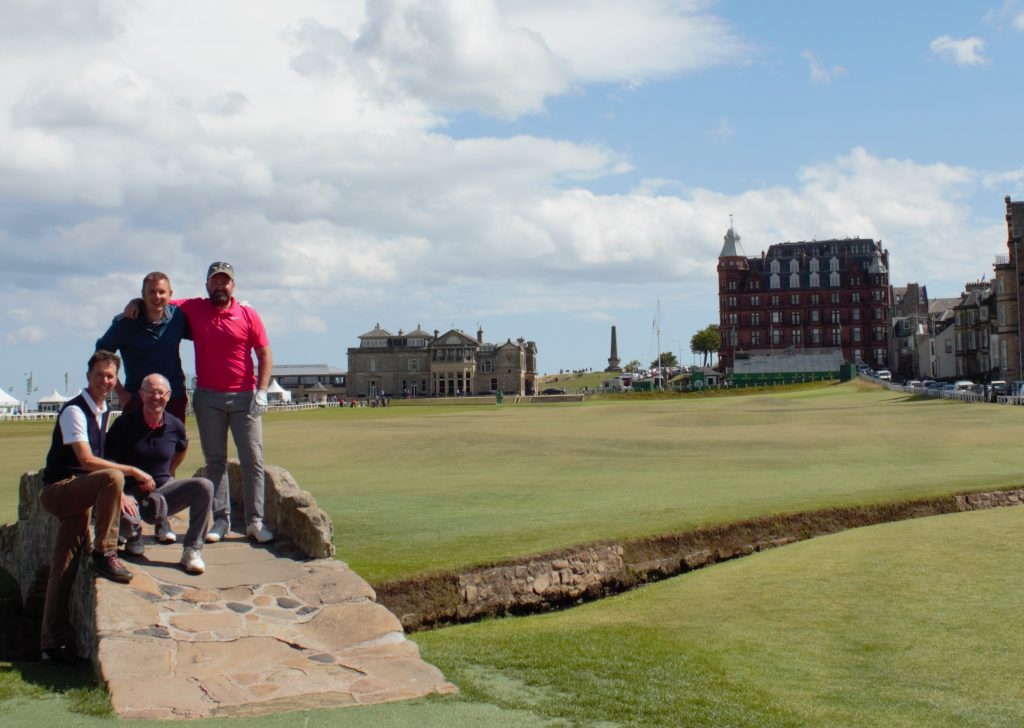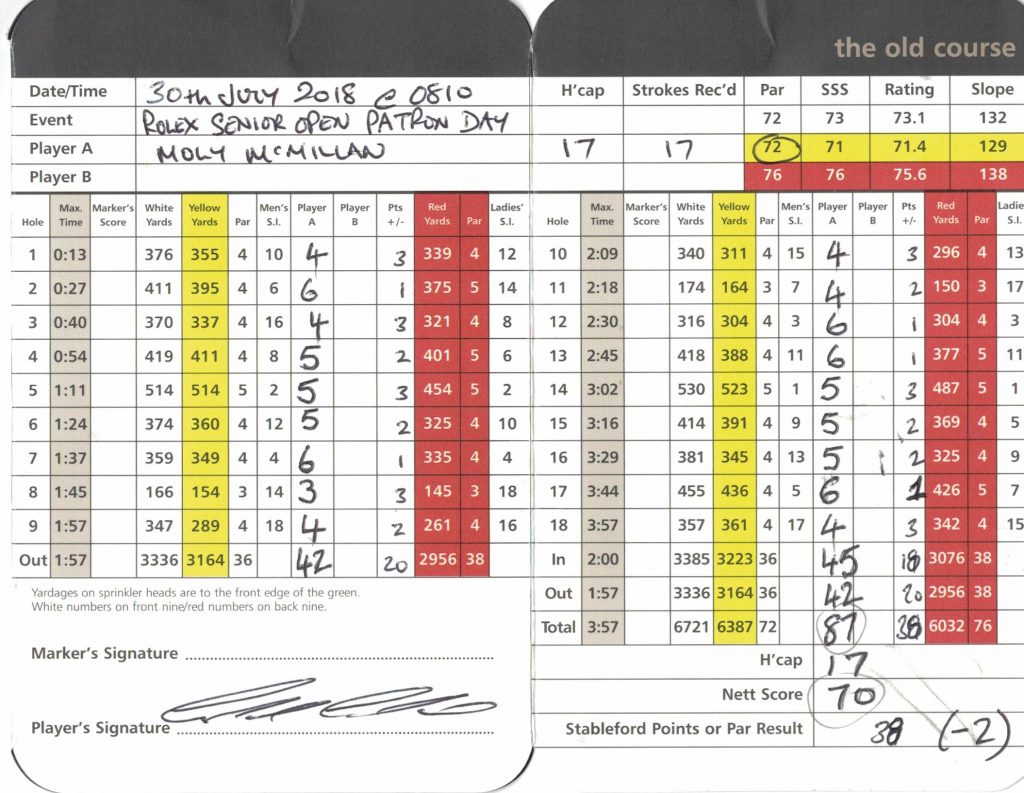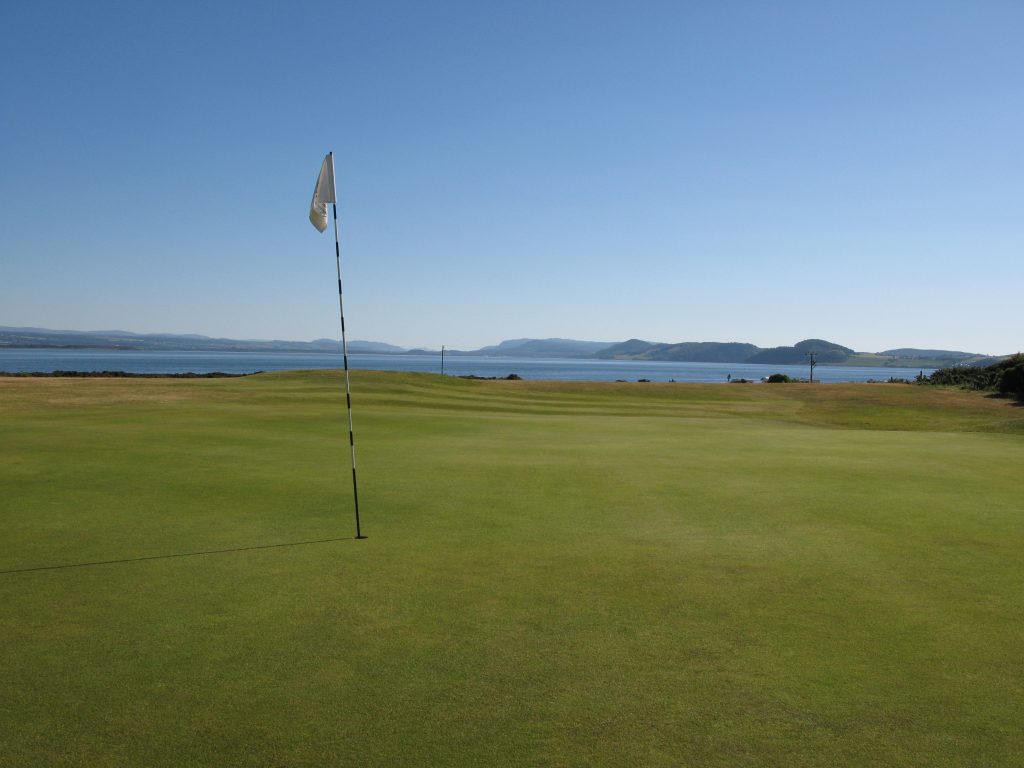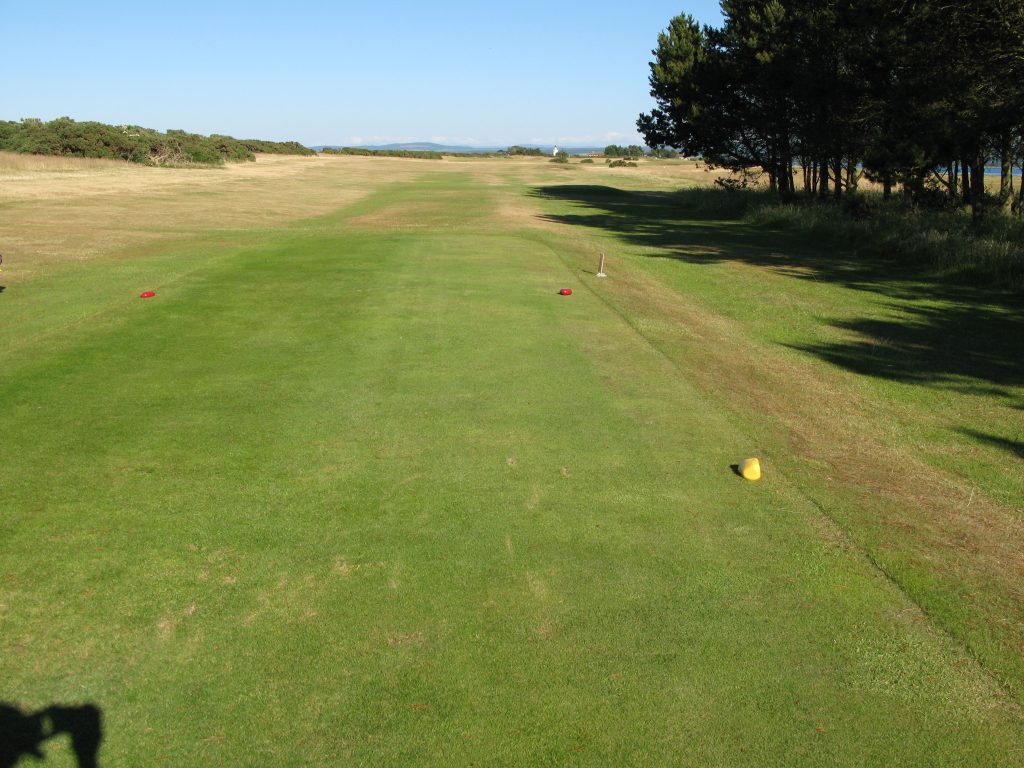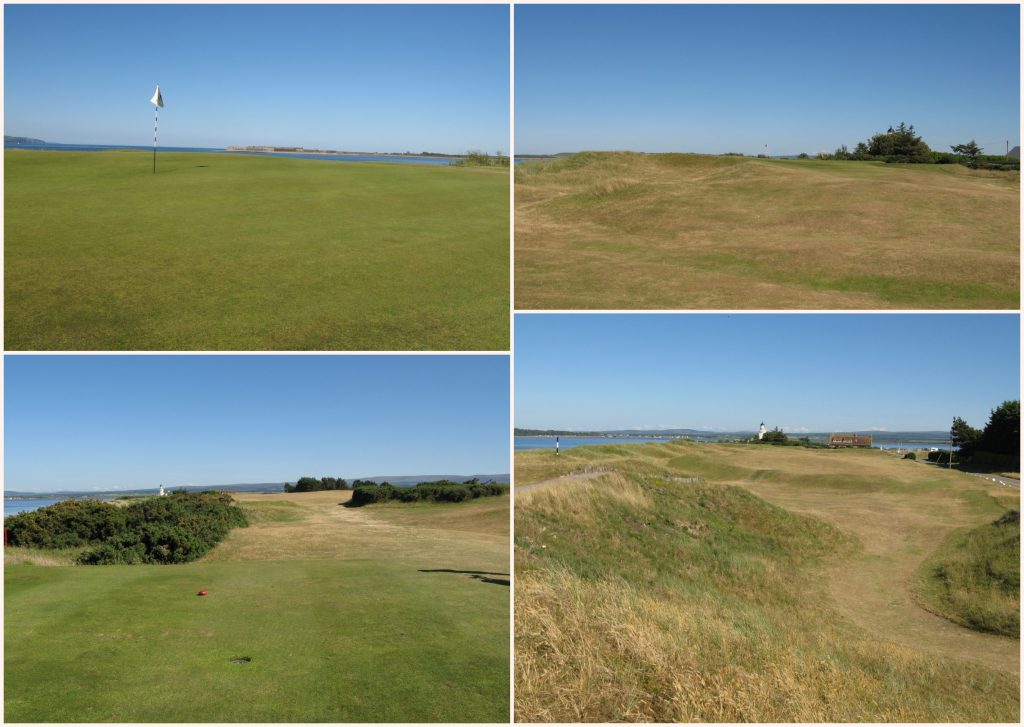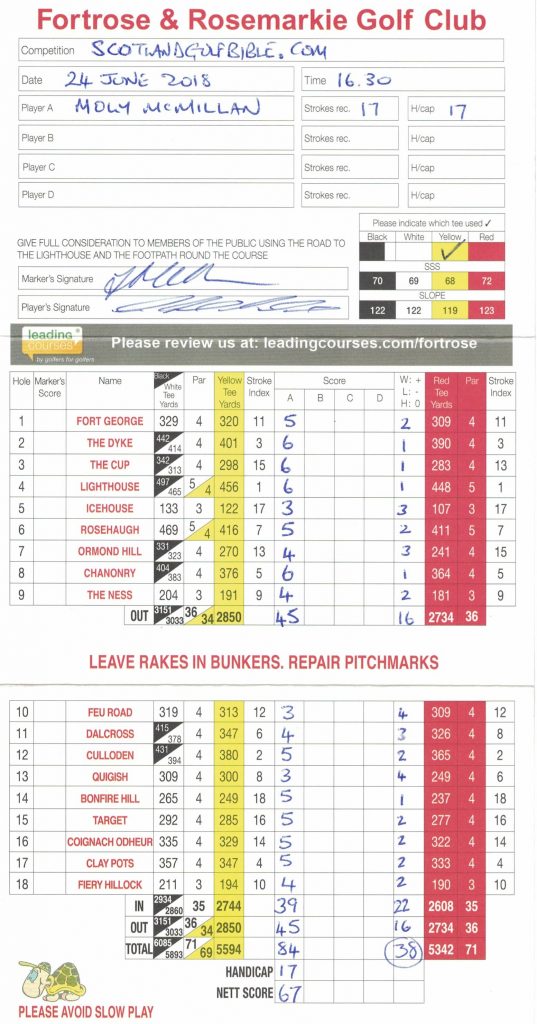Spectacular natural links, but undermined by misleading branding.
Round £100. Par 70. Course Rating / Slope Rating (yellow) 70.3/126. Value (out of 5) – 3
Moly’s score – 91
Golfers often stand on a tee and ask “Where’s the green?”. On Montrose’s first tee, I can imagine a newcomer to links golf asking “Where’s the course?”.
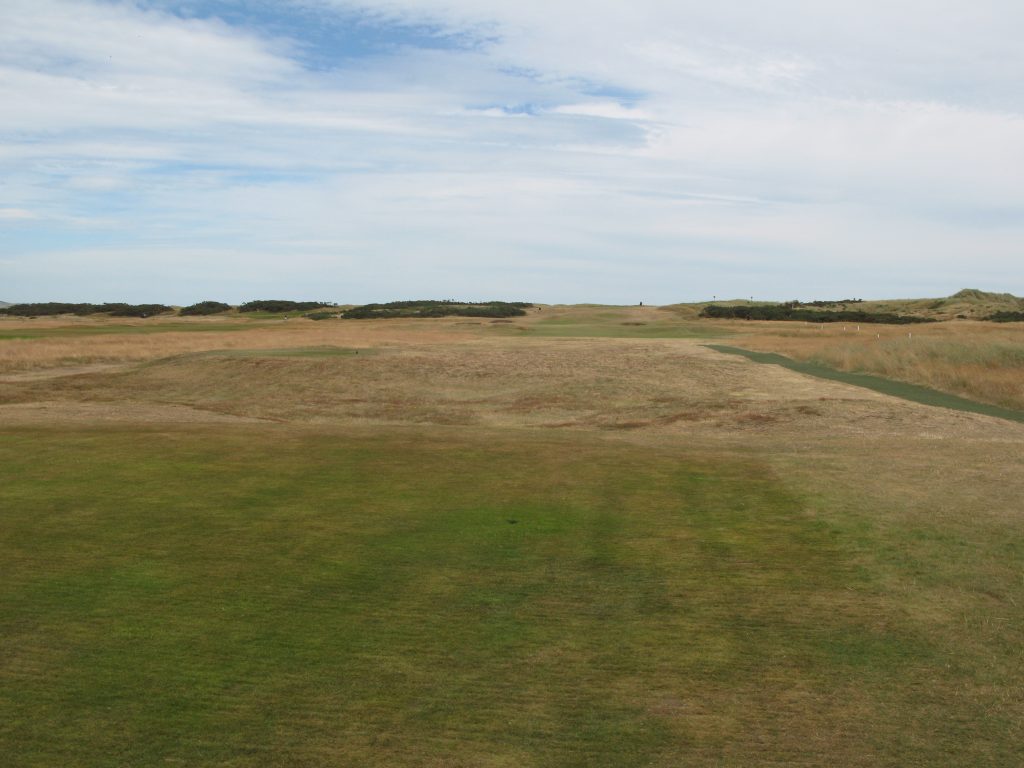
Montrose’s 1562 layout is one of the most natural of all links courses, and as such should be a priority for those wanting to experience this form of the game at its most basic.
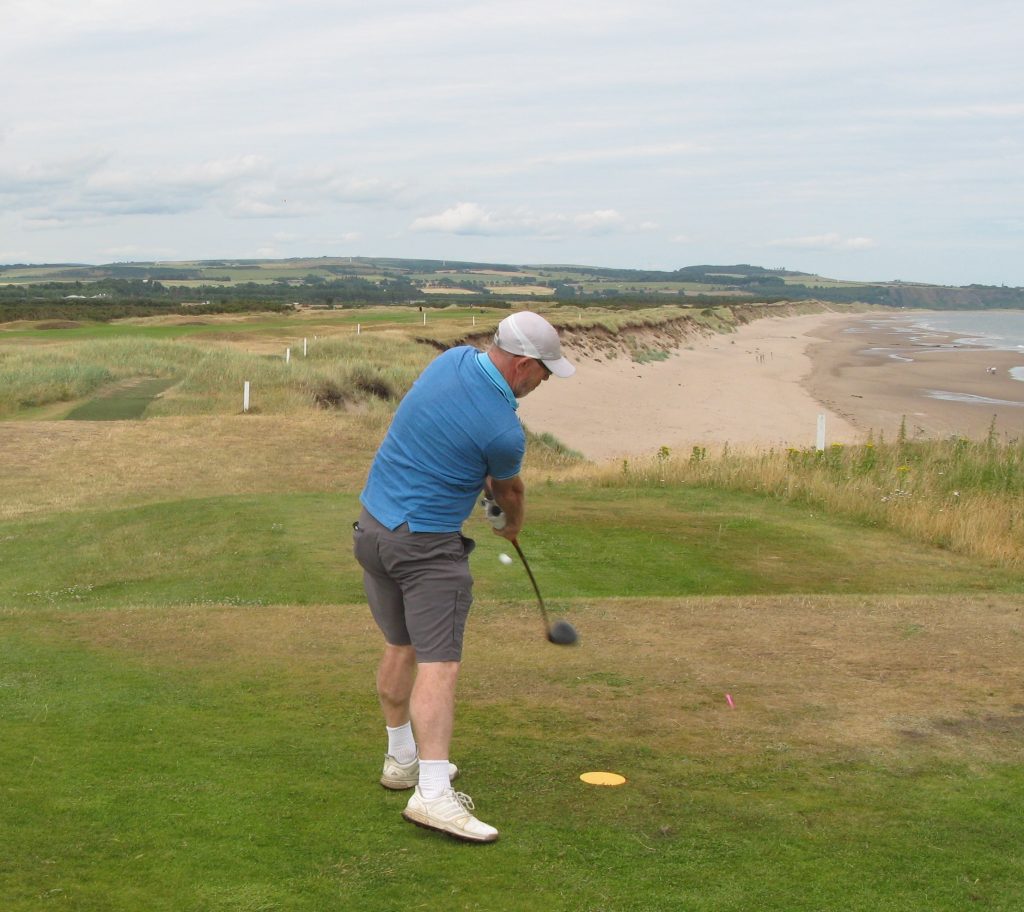
Formerly named the Montrose Medal, the ‘1562’ label has only been used since 2018; ‘1562’ derived from the claim that golf has been played on the land from that year. The current course’s story and location actually begins in the 1860s, and evolved over a 50 year period during which a number of legends, starting with Old Tom Morris and ending with Harry Colt who designed the existing course in 1913. Colt had laid out the Montrose Broomfield course a few years earlier (My earlier blog here). So in fact, the more ‘junior’ of the two Montrose courses, ‘Broomfield’, actually pre-dates the ‘1562’ course!
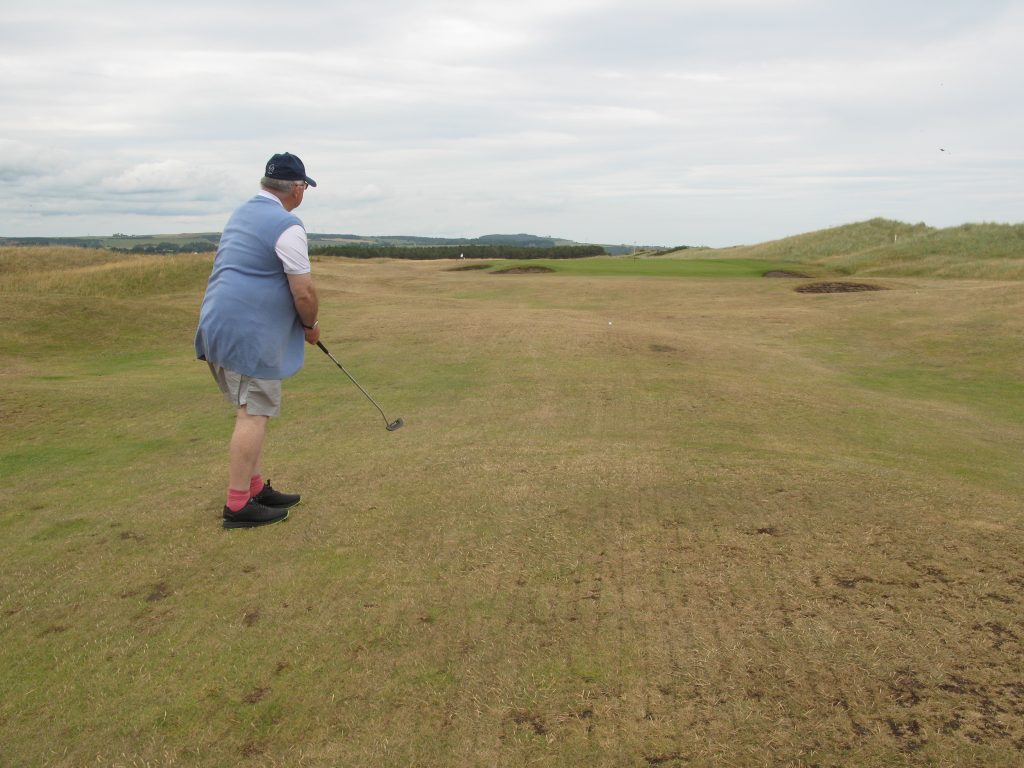
Like a number of Scottish Links, there were several different golf clubs that played on the same course, often in club matches versus each other, but sadly only two of them – Royal Montrose Mercantile and Montrose Caledonia – still exist and can be used by visiting golfers.
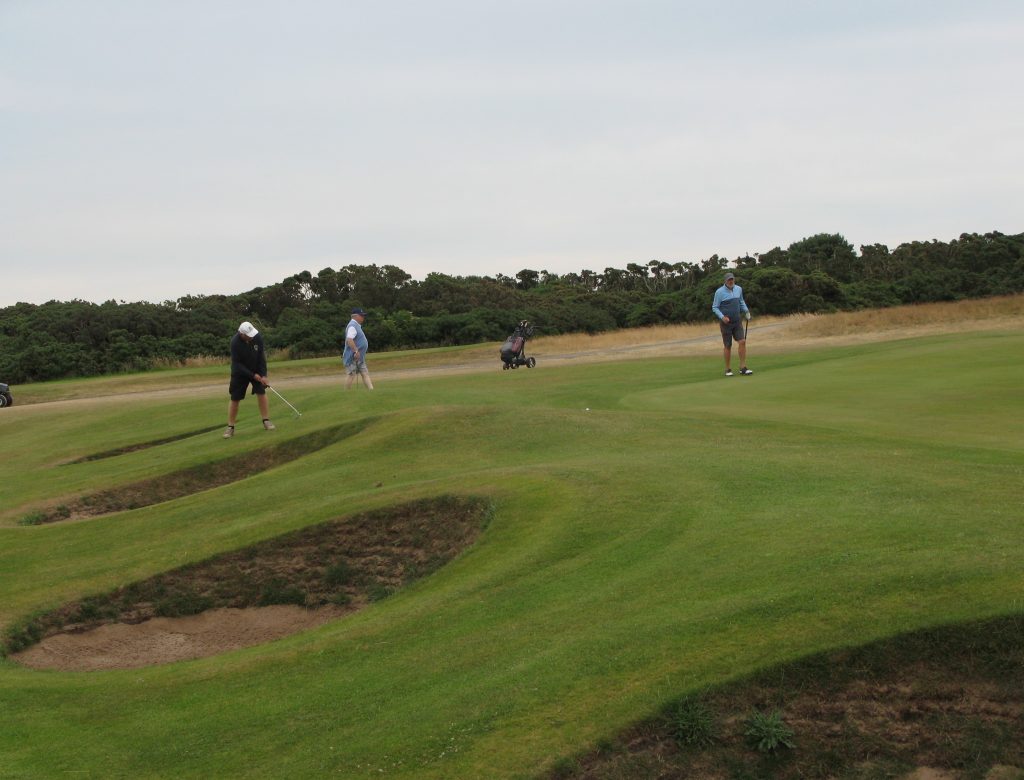
The course is a really honest test of links golf, set on the robust and fast running links land of the Angus coastline. There are six northbound coastal holes, starting from the daunting 2nd, then turning back south for a couple of holes, before an east to west and back gorse-laden spur from holes 10 through 15.
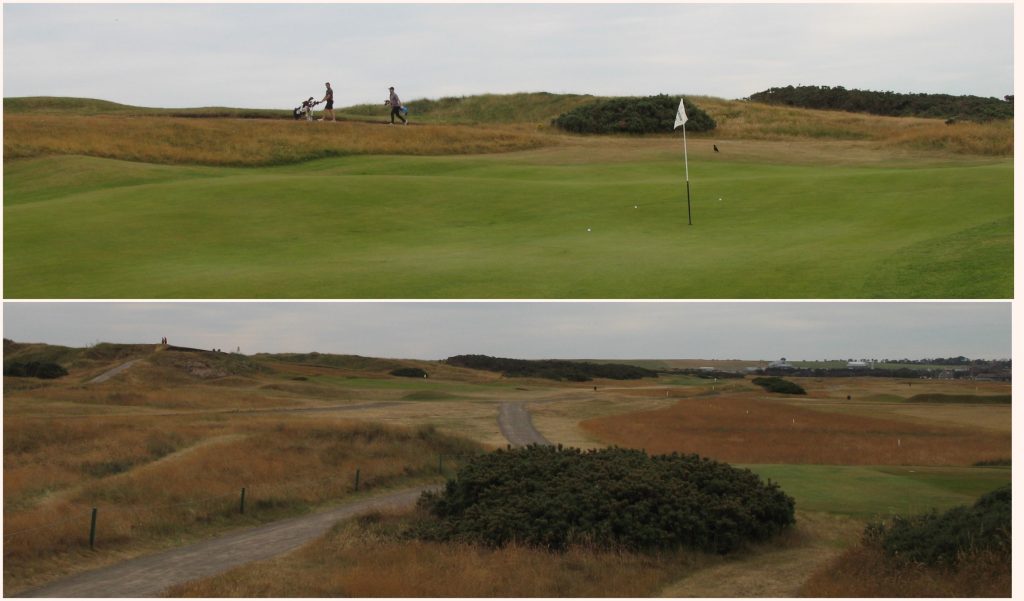
The par three 16th and par four 17th are then two holes that are good enough for the Championship course of Carnoustie; fitting, as Montrose has been used as a Final Open Qualifying venue. Many a good round will have been destroyed on those late holes.

Unfortunately, when I played alongside 3 of my former Apex trustees, for the inaugural “Apex Trophy”, the course was not in great condition. We encountered the ‘choice’, but very accurate, language of a few local members of this hardy Angus town, mid way between the cities of Dundee and Aberdeen. I was ‘telt’ by an old guy (in his 80s, fully adorned in football colours) that “Son, the course is in its worst …… state I’ve ever seen and I’ve been a member for more than 50 years!”. It was certainly not conditioned good enough for the £65 twilight round fee, never mind the £100 daytime fee.

Nevertheless, the bunkers and greens were decent, and the quality of the layout and challenge was never in doubt, with the yellow tees still presenting 6137 yards in length. A strong wind would undo any golfer here.
I played pretty well for 91, but this was nowhere near good enough for the trophy with Gordon Samson shooting an excellent 83 (40 points), and will be severely cut for the next trophy outing!
Facts:
Course Type: Links
Par 70 (1 par 5s, 14 par 4s, 3 par 3s)
Distance (yellow): 6137 yards
Moly’s Gross score: 91

